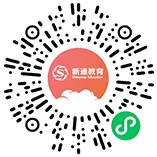剑桥雅思11中有篇阅读文章提到了factory farming,很多同学觉得迷惑,怎么又是工厂又是农业,那么什么才是factory farming呢?更多雅思阅读提分技巧,可详询新通外语雅思名师,免费咨询电话400-618-0272
剑桥雅思11中有篇阅读文章提到了factory farming,很多同学觉得迷惑,怎么又是工厂又是农业,那么什么才是factory farming呢?今天雅思名师张楠老师为大家解答。
Intensive animal farming or industrial livestock production, also known as factory farming by opponents of the practice, is a modern form of intensive farming that refers to the keeping of livestock, such as cattle, poultry (including in "battery cages") and fish at higher stocking densities than is usually the case with other forms of animal agriculture—a practice typical in industrial farming by agribusinesses. The main products of this industry are meat,milk and eggs for human consumption.[6] There are issues regarding whether factory farming is sustainable and ethical.
Confinement at high stocking density is one part of a systematic effort to produce the highest output at the lowest cost by relying on economies of scale, modern machinery, biotechnology, and global trade. There are differences in the way factory farming techniques are practiced around the world. There is a continuing debate over the benefits, risks and ethical questions of factory farming. The issues include the efficiency of food production; animal welfare; whether it is essential for feeding the growing global population; and the environmental impact (e.g. pollution) and health risks.
The practice of industrial animal agriculture is a relatively recent development in the history of agriculture, and the result of scientific discoveries and technological advances. Innovations in agriculture beginning in the late 19th century generally parallel developments in mass production in other industries that characterized the latter part of the Industrial Revolution. The discovery of vitamins and their role in animal nutrition, in the first two decades of the 20th century, led to vitamin supplements, which allowed chickens to be raised indoors. The discovery of antibiotics and vaccines facilitated raising livestock in larger numbers by reducing disease. Chemicals developed for use in World War II gave rise to synthetic pesticides. Developments in shipping networks and technology have made long-distance distribution of agricultural produce feasible.
Agricultural production across the world doubled four times between 1820 and 1975 (1820 to 1920; 1920 to 1950; 1950 to 1965; and 1965 to 1975) to feed a global population of one billion human beings in 1800 and 6.5 billion in 2002.[12]:29 During the same period, the number of people involved in farming dropped as the process became more automated. In the 1930s, 24 percent of the American population worked in agriculture compared to 1.5 percent in 2002; in 1940, each farm worker supplied 11 consumers, whereas in 2002, each worker supplied 90 consumers.
According to the BBC, the era factory farming per se in Britain began in 1947 when a new Agriculture Act granted subsidies to farmers to encourage greater output by introducing new technology, in order to reduce Britain's reliance on imported meat. The United Nations writes that "intensification of animal production was seen as a way of providing food security." In 1966, the United States, United Kingdom and other industrialized nations, commenced factory farming of beef and dairy cattle and domestic pigs.[14] From its American and West European heartland factory farming became globalised in the later years of the 20th century and is still expanding and replacing traditional practices of stock rearing in an increasing number of countries. In 1990 factory farming accounted for 30% of world meat production and by 2005 this had risen to 40%.
》》更多雅思阅读学习技巧,可详询新通外语雅思名师,免费咨询电话400-618-0272
 相关阅读:
相关阅读:
咨询时间:8:00~24:00
 400-618-8866
400-618-8866
咨询时间:8:00~24:00
扫一扫
立即报名

扫一扫
立即进站

想要获取更多考试培训信息,可以通过以下方式联系到距离您最近的新通教育;
1、拨打新通教育咨询热线:400-618-8866;
2、点击【立即咨询】 ,我们会有课程老师为你解答考试难题;
3、完成以下表单,轻松预约,预约获取定制学习方案的机会。